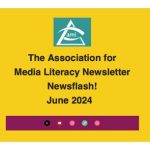New reading: Teaching Students to Write with A.I. – The Space Framework
Teaching Students to Write with AI: The SPACE Framework
This rich and extensive article suggests that AI writing tools are transforming education, thus challenging traditional approaches. We think that the SPACE framework might guide effective use, but human involvement remains crucial due to AI limitations and biases.
We invited our colleague and a Director in AML, Michilin ni Threasaigh, to critically respond. Here are her comments:
As a high school teacher struggling with how my writing pedagogy needs to shift in the age of ChatGPT and the ethics of what to do when AI detection software flags student writing submitted for evaluation, I’m going to be thinking about this piece for a long time. I think most of my colleagues need to read and think about this article too. It poses a lot of important inquiry questions about writing with — rather than against — generative AI.
Personally, I’m not yet ready to go full “embrace” — my colleagues would be much aggrieved if I adopted the “SPACE framework” proposed here. I bounce between “manage,” “balance,” and “accept” on Kleiman’s continuum between “resist” and “embrace” as I try to figure out where generative AI fits in my pedagogy. But the “SPACE framework” is an accurate description of how I use AI to compose texts when academic honesty isn’t part of the equation (e.g. rubrics, letters to elected representatives) and probably where we’re naturally headed with this tech as far as writing assistance is concerned.
The traditionalists will cry, ‘But kids need to learn the mechanics of writing!’ But the more I think about this the more I think it frees us up to focus on the more important aspects of writing — content and organization (at the secondary level when students should already have a firm grasp on basic mechanics, anyway). I think that once we push past this moral panic stage, education will eventually come to view generative AI similarly to how we view text prediction or spelling/grammar check or text-to-speech software: they enhance writing fluency by reducing cognitive load, freeing them to concentrate on generating and refining ideas. This includes assistance with tasks such as spelling (if it poses a challenge) or typing (for those who haven’t mastered keyboarding).
We urgently need to rethink writing instruction, Kleiman argues, if we don’t, “we are in danger of writing assignments, from students’ responses through teachers’ grading, being untouched by human hands and unseen by human eyes.” On this point we agree. Kleiman’s article gives us many entry points to begin/continue this review.
-Michilin is also a Secondary teacher in Ontario’s Toronto District School Board.
*the featured image is from “Medium”: https://medium.com/the-generator/teaching-students-to-write-with-ai-the-space-framework-f10003ec48bc



